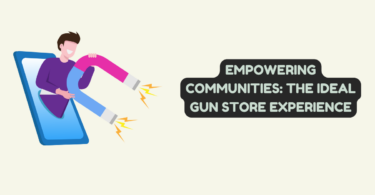
Sets- Types, Symbols, Properties with Examples
Introduction of Sets
In mathematics, set refers to the collection of definite objects forming the group. Sets are defined as a group of entities whose elements cannot be changed and are fixed. The group of items in a set is days of the week, different types of vehicles, geometrical shapes, collection of numbers, etc. Any mathematical object is the elements that make up a set like symbols, numbers, variables, lines, points in space, or the other sets.
The elements in a set can be written in any order but cannot be repeated. In our daily life to represent a collection of data and bulk data sets are used. Some types of sets are superset, empty set, finite set, equivalent set, subset, infinite set. During calculations, each type of set has different properties and importance.
There are various Symbols used in Set Theory to do the basic union, intersection operations, etc. In this article, we shall give brief information about the sets, their types with symbols and examples.
Types of Sets, Symbols with examples
Sets are well-determined collections that are entirely characterised by their elements. The elements of a set are the items present in it and are usually enclosed in curly brackets.
- Empty Set
An empty set is a set that does not contain any element. Also called a void set or null set. Symbols used to denote empty set are ❴ ❵ or ∅
Example: A=❴x: x is a natural number less than 1 ❵
A= ∅, Since there are no natural numbers less than 1.
- Singleton Set
A single element in a set is called a singleton set. It is denoted by ❴ s ❵
Example: A=❴ 2 ❵, B=❴ 0 ❵.
- Finite Set
A definite number of elements in a set is called a finite set.
Example: A set of 10 natural numbers.
A=❴1,2,3,4,5,6,7,8,9,10 ❵
- Infinite Set
An infinite set is a set whose elements cannot be estimated.
Example: A group of all the natural numbers
A=❴ 1,2,3,4,5,6,7,8……..❵
- Equivalent Set
The number of elements is the same for two sets; the two sets are called equivalent sets. The order of the set is not concerned. Represented as
n(A)=n(B)
Where two different sets are A and B with the same number of elements.
Example: If A=❴ a,b,c,d❵, and B=❴ Blue, green, black, red❵
Hence A and B are equivalent sets with four elements in both of them.
- Equal Sets
If the two sets A and B have exactly the same elements, the order of elements does not matter. Then the two sets are equal to each other.
Example: A=❴ 1,2,3,4,5 ❵ and B=❴ 1,4,5,3,2❵
Then A=B
- Disjoint Sets
If the two sets A and B do not contain any element in common, then the two sets are said to be disjoint.
Example: A=❴1,2,3,4 ❵ and B=❴ 6,0,8,9❵
Here both A and B have no element in common between them.
- Universal set
Relevant to certain conditions, if a set contains all the sets, it is called the universal set. The set of all possible values is the Universal set. It is denoted as ‘U’.
Example: If A=❴ 2,4❵ and B=❴ 1,2,4,5❵
Then the universal set is U=❴ 1,2,4,5❵
- Superset
If every element of set Q is set P, then set P is claimed to be the superset of Q. It is denoted by P⊃Q
Example: Set P= ❴ 1,2,3,4❵ and Set Q= ❴ 1,3,4❵
Then set P is the superset of Q.
- Subsets
If every element of A is also an element of B, then set A is a subset of B. It is denoted by A⊆B. Generally; a subset is a part of another set.
Example: A=❴ 5,6,7❵. Then ❴1,2❵⊆ A
Other subsets of A are
❴ 5❵, ❴ 6❵, ❴ 7❵, ❴ 5,6❵, ❴ 6,7❵, ❴ 5,7❵, ❴ 5,6,7❵, ❴ ❵
Note: A⊄B is denoted if A is not a subset of B.
Basic operations of Sets:
- Union of Sets
A set containing all the elements of two sets, P and Q, are called the union of two sets, P and Q. It is denoted as P∪Q.
Example: Set P= ❴ 1,2❵ and Set Q= ❴ 5,6❵. Then
P∪Q= ❴ 1,2,5,6❵
- Intersection of Sets
The set containing the common elements between the sets P and Q is called the intersection of two sets P and Q. It is denoted as P⋂Q.
Example: Set P=❴ 1,2❵ and Set Q= ❴ 2,6❵. Then
P⋂Q=❴ 2❵
- Difference of Sets
A set with elements of P but no elements of Q is called the difference of two sets, P and Q. It is denoted as P-Q.
Example: Set P=❴ 1,2,3❵ and Set Q=❴ 2,3,4❵
P-Q= ❴ 1❵
- Complement of Sets
The elements not present in P but have all the elements in the universal set are called the complement of a set P. It is denoted as P’.
The sets can be represented by the description, roster, rule, and Venn Diagrams.
Properties of Sets
- Commutative Property
- P⋃Q=Q⋃P
- P⋂Q=Q⋂P
- Associative Property
- P⋃(Q⋃R)=(P⋃Q)⋃R
- P⋂(Q⋂R)=(P⋂Q)⋂R
- Distributive Property
- P⋃(Q⋂R)=(P⋃Q)⋂(P⋃R)
- P⋂(Q⋃R)=(P⋂Q)⋃(P⋂R)
- De Morgan’s Law
- (P⋃Q)’=P’⋂Q’
- (P⋂Q)’=P’⋃Q’
- Complement Law
- A⋃A’=A’⋃A=U
- A⋂A’= ∅
- Idempotency Law
- AUA=A
- A⋂A=A
- Identity Law
- AU∅=A
- A⋂U=A
Conclusion
For building more complex mathematical structures and to group a collection of related objects, sets are used. In every field of mathematics, sets are referred to or used in some way with their different properties and functionalities.






